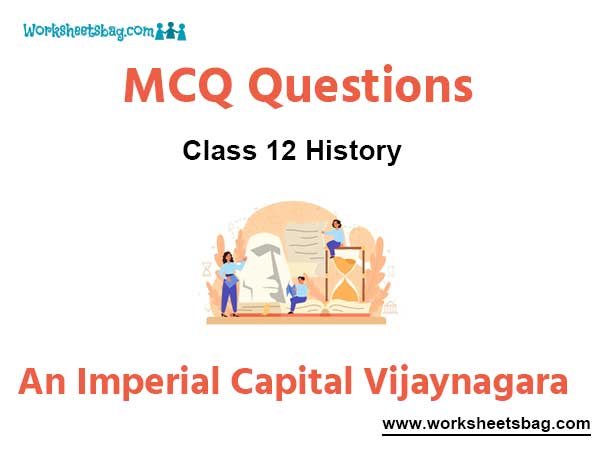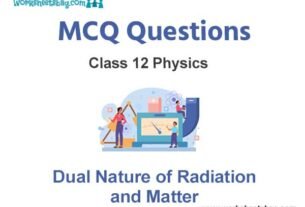Please refer to An Imperial Capital: Vijaynagara MCQ Questions Class 12 History below. These MCQ questions for Class 12 History with answers have been designed as per the latest NCERT, CBSE books, and syllabus issued for the current academic year. These objective questions for An Imperial Capital: Vijaynagara will help you to prepare for the exams and get more marks.
An Imperial Capital: Vijaynagara MCQ Questions Class 12 History
Please see solved MCQ Questions for An Imperial Capital: Vijaynagara in Class 12 History. All questions and answers have been prepared by expert faculty of standard 12 based on the latest examination guidelines.
MCQ Questions Class 12 History An Imperial Capital: Vijaynagara
Question. Consider the following statements regarding the Lotus Mahal:
1. Lotus Mahal of the most beautiful buildings in the royal centre is the Lotus Mahal, so named by British travellers in the nineteenth century.
2. One suggestion, found in a map drawn by Mackenzie, is that Lotus mahal may have been a council chamber, a place where the king met his advisers.
3. Lotus Mahal had nine towers – a high central one, and eight along the sides.
4. The Lotus Mahal is otherwise called the Kamal Mahal or Chitragani Mahal. It is one of only a handful few astonishing building in Hampi that had not been damaged or destroyed amid the attack on the city.
Which of the following statement(s) is/are correct?
(A) 1, 2
(B) 1, 2, 3
(C) 1, 2, 4
(D) All of the above.
Answer
D
Question. Which of these rivers are the major source of water for Vijayanagara?
(A) Kaveri
(B) Krishna
(C) Tungabhadra
(D) Mahanadi
Answer
C
Question. On which of the following occasions were ceremonies performed at Mahanavami Dibba?
(A) Worship of the state horse
(B) Marriage of the king
(C) Victory over the enemy
(D) All of the above
Answer
A
Question. Which of the following statement(s)is/are correct regarding Virupaksha Temple?
(i) Virupaksha Temple is located in Hampi in the Ballari district of Karnataka, India. It is part of the Group of Monuments at Hampi, designated as a UNESCO World Heritage Site.
(ii) Virupaksha Temple is the main center of pilgrimage at Hampi and had been considered the most sacred sanctuary over the centuries.
(iii) The temple is dedicated to Lord Vishnu, known here as Virupaksha/Pampa pathi.
(iv) The front hall of the shrine was built by Krishnadeva Raya accession.
Which of the following statement(s) is/are correct?
(A) (i), (ii), (iii)
(B) (i), (ii), (iv)
(C) (i), (iii), (iv)
(D) All of the above
Answer
B
ASSERTION AND REASON BASED MCQs :
Question. Assertion (A): The famous lotus building is constructed in Indo-Islamic style of architecture.
Reason (R): The rulers of Vijayanagara were fond of Islamic architecture more than Indian architecture.
(A) Both A and R are true and R is the correct explanation of A.
(B) Both A and R are true but R is NOT the correct explanation of A.
(C) A is true but R is false.
(D) A is false and R is true.
Answer
C
Question. Assertion (A): The engineer and antiquarian Colonel Colin Mackenzie brought the ruins of Hampi to light in 1800. He worked for many years in East India Company and prepared the first Survey maps of this site.
Reason (R): Dozens of inscription were collected from Virupaksha temples and other temples situated around temples.
(A) Both A and R are true and R is the correct explanation of A.
(B) Both A and R are true but R is NOT the correct explanation of A.
(C) A is true but R is false.
(D) A is false and R is true.
Answer
B
Question. Assertion (A): After the death of Krishnadeva Raya, the relation between Sultans and Rayas became bitter.
Reason (R): The adventurous policy of Rama Raya who tried to play off one Sultan against another, made the Sultans angry and they combinedly defeated him. In this way, Vijayanagara empire was gradually destructed.
(A) Both A and R are true and R is the correct explanation of A.
(B) Both A and R are true but R is NOT the correct explanation of A.
(C) A is true but R is false.
(D) A is false and R is true.
Answer
A
Question. Assertion (A): The Battle of Talikota (23 January 1565) was a watershed battle fought between the Vijayanagara Empire and the Deccan Sultanates.
Reason (R): Various causes such as weak central government, weak successors of Krishnadeva Raya, different dynasties struggles against the Bahamani Empire, weak empire, etc. contributed in the downfall of the empire.
(A) Both A and R are true and R is the correct explanation of A.
(B) Both A and R are true but R is NOT the correct explanation of A.
(C) A is true but R is false.
(D) A is false and R is true.
Answer
B
CASE-BASED MCQs :
Question. Observe the picture and answer the following questions by choosing the correct option.

Question. Which temple is shown in the picture?
(A) Virupaksha temple
(B) Pampadevi temple
(C) Hazara Ram temple
(D) Vitthala temple
Answer
A
Question. Which script was used for signing royal orders by the rulers in the name of Lord Virupaksha?
(A) Tamil
(B) Kannada
(C) Telugu
(D) Malayalam
Answer
B
Question. What were Raya Gopurams used to exemplify?
(A) Supremacy of god
(B) Imperial authority
(C) Huge amounts spent on temples
(D) Guide to the travellers
Answer
B
Question. What was the name given to pavilions in the Virupaksha temple?
(A) Mandapa
(B) Dibba
(C) Gopuram
(D) Nayaka
Answer
A



